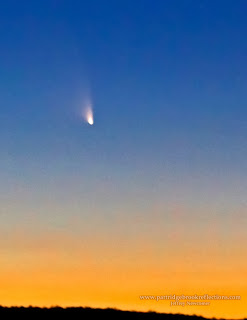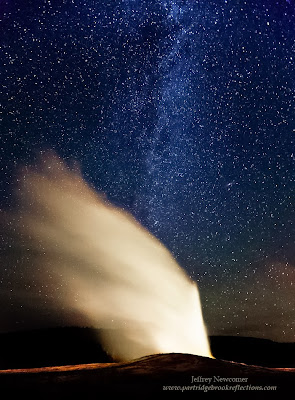This is the time of year when we see many photographers showing
 |
| Graze the Fence, Alstead, NH |
Why I Blog
One of the major advantages of doing a weekly blog is that it forces
 |
| Farrier's Touch |
So this week, instead of sharing what I think are my best images, I want to recall some of the experiences of 2013. The images may not be considered my best, but they will hopefully recall some of the best stories of this busy year.
If you are desperate for the pretty pictures, check out my slide show at the end of the article. Pick whichever 10 you like.
Back Roads and Unexpected Treasures
Many of my blogs focus on the attractions of a specific New England location, some of which are familiar to me and others that I must discover along with my readers. Here are just a few of my favorite shoots of the past year.
Meandering Vermont's Back Roads
 |
| Mill Brook, Townsend, Vermont |
Vermont Meander
Treasures of Dummerston Vermont
My blog article on the attractions of Dummerston, Vermont was
 |
| Dummerston Sunset |
Dummerston, Vermont

Blow Me Down Mill, Cornish
Not all assignments are self generated. Last spring I got a call from
 |
| Aspet House, St Gaudens Historic Site |
Blow Me Down Mill, Cornish, NH
Tale of Two Trees
I am Primarily a landscape photographer so, by definition, I love trees. This year I had the opportunity to celebrate two special trees
 |
| Only a Memory |
Tale of Two Trees
Green River
 |
| Green River, Vermont |
The village is quintessential New England with a classic covered bridge, a lovely timber frame dam and water fall, a typically austere white New England church, a welcoming country Inn and of course the mandatory red barn. For me, the place has been a favorite photography spot for years. No matter how many times I return, I always find new inspiration. This year I finally, and reluctantly, shared the secret of this hidden treasure.
Green River, Vermont
Seeing in the Dark
This was a year for exploring the night sky as everyone seemed to discover the capability of fast digital sensors to probe deep into space and time.
Comet PanSTARRS
 |
| Comet PanSTARRS |
Comet PanSTARRS
In Search of the Milky Way
In any photographic exploration of the night sky, the most
 prominent
feature by far is the Milky Way. We have become aware of capability of
high ISO sensors to show the band of light from our galaxy at an
intensity far beyond the ability of our eyes to perceive, even on the
clearest night. The digital camera has become a time machine capable of
looking back in time tens of thousands of years. This year I learned
more about the techniques needed to capture the night sky, how to
predict the location of the Milky Way and how to plan my shoots to
place the Galactic band behind interesting foregrounds. The Milky Way
is the obvious center of
prominent
feature by far is the Milky Way. We have become aware of capability of
high ISO sensors to show the band of light from our galaxy at an
intensity far beyond the ability of our eyes to perceive, even on the
clearest night. The digital camera has become a time machine capable of
looking back in time tens of thousands of years. This year I learned
more about the techniques needed to capture the night sky, how to
predict the location of the Milky Way and how to plan my shoots to
place the Galactic band behind interesting foregrounds. The Milky Way
is the obvious center of  |
| Old Faithful & Andromeda |
The Glory of the Milky Way
Back to the Sea and That Means Lighthouses
 |
| Whaleback Dawn |
Rye Beach and Whaleback Lighthouse
Camden and the Middle Maine Coast
 |
| Atlantic Rainbow, Rye Beach, NH |
Special Projects
In 2013 I had the opportunity to shift from my usual photography and explore new modes of expression.
Monadnock Documentary
In 2013 I continued to enjoy being a small contributor to Rabbit Ear Films as we work to produce a feature length documentary
 about our region's
iconic feature, Mount Monadnock. Most of the filming has been completed
and the difficult editing phase is underway. Our goal is to complete
the film next year. For me it has been a unique learning experience as I
have come to understand the differences between what works for video as
opposed to stationary landscape photography. As a member of the Rabbit
Ear Board of Directors I am experiencing the many complexities of
assembling a top quality film, from the fund raising, to coordination of
script, video, music and narration, and planning for promotion and
distribution. It is fascinating, but at times it reminds me of how easy
it is to go out and photograph a tree.
about our region's
iconic feature, Mount Monadnock. Most of the filming has been completed
and the difficult editing phase is underway. Our goal is to complete
the film next year. For me it has been a unique learning experience as I
have come to understand the differences between what works for video as
opposed to stationary landscape photography. As a member of the Rabbit
Ear Board of Directors I am experiencing the many complexities of
assembling a top quality film, from the fund raising, to coordination of
script, video, music and narration, and planning for promotion and
distribution. It is fascinating, but at times it reminds me of how easy
it is to go out and photograph a tree. Monadnock Documentary Film (Check out our Trailer)
Chesterfield Conservation Commission Web Site
This year, I finally renovated our Chesterfield Conservation
 Commission web
site. The previous site dated back to a time when I was still coding
by hand in HTML. Needless to say, it was getting very clunky. The
overhaul was simplified by the fact that I used Zenfolio, the portfolio
system that I had just used to redo my own photography web site. The
Commission site is loaded with great information, including descriptions
and maps of public lands, information on events and general
conservation resources. The system makes updates simple and intuitive
and most importantly changes can be easily made by any member of the
commission.
Commission web
site. The previous site dated back to a time when I was still coding
by hand in HTML. Needless to say, it was getting very clunky. The
overhaul was simplified by the fact that I used Zenfolio, the portfolio
system that I had just used to redo my own photography web site. The
Commission site is loaded with great information, including descriptions
and maps of public lands, information on events and general
conservation resources. The system makes updates simple and intuitive
and most importantly changes can be easily made by any member of the
commission.Chesterfield Conservation Commission Web Site
Sound
At the end of last year I upgraded my portfolio site using Zenfolio.
 |
| Recorder & Dead Cat |
Sounds of Nature
And Finally Christmas Lighting
My last self-assignment this year was capturing Christmas
 |
| Central Square, Keene, NH |
Christmas Lights
This process of reflection and study is a perfect example of how much I learn every week through the effort to assemble information that I hope will be of interest to my fellow photographers. No matter how much I think I know about a topic there is always more to discover. I love sharing my fascination for photography with others, but it is the self discovery that keeps me coming back every week. So I look forward to another year of explorations into the endless potential for artistry within the Digital Camera. Thank you for coming along and sharing with others.
Check out some of my favorite images from 2013, and Nature's sweat accompaniment.






































